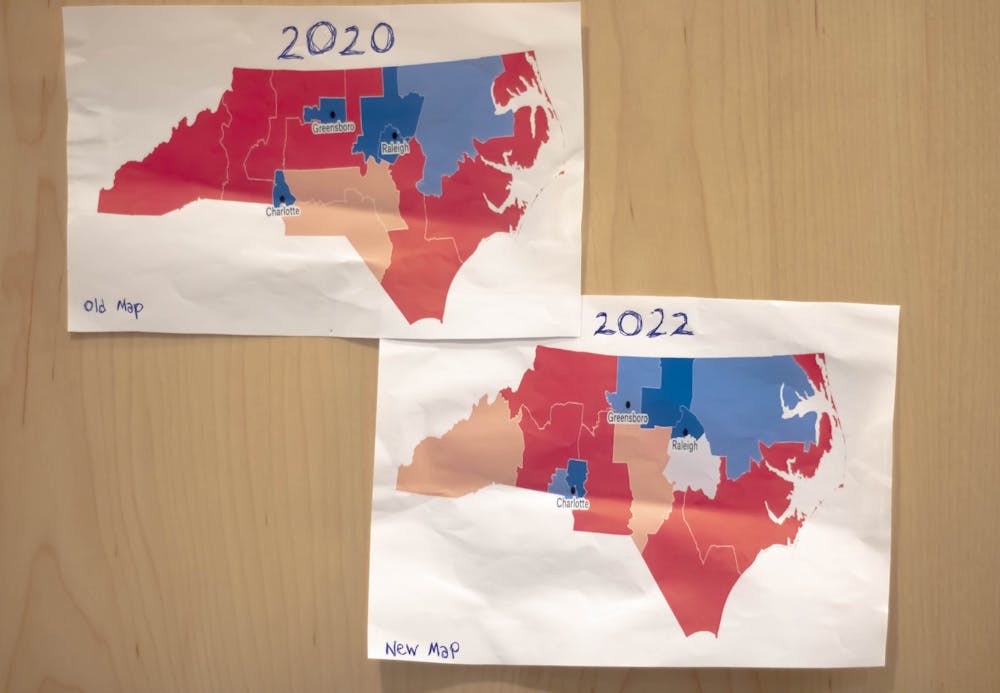In response, the state reconfigured the newly-established 12th Congressional District the next year, which thinly stretched 160 miles across the state.
U.S. Supreme Court case Shaw v. Reno resulted after the 12th and 1st Districts were challenged for gerrymandering and ruled racial gerrymandering unconstitutional in some cases.
The court said that the district grouped together Black voters and that the state's first district, stretching from Elizabeth City to Durham, was also problematic.
The state redrew its districts in 1997 and they were rechallenged in court, leading the N.C. General Assembly to redraw the districts a second time.
“It’s certainly always been a very political process," Gerry Cohen, an adjunct instructor of public policy at Duke University and Wake County Board of Elections member, said. "Whether it's Democrats or Republicans in charge of the General Assembly, the plans have generally benefited the party in power."
The districts went before the U.S. Supreme Court five times for review, including in Cooper v. Harris in 2017.
The Cooper v. Harris decision upheld a U.S. District Court ruling that the 1st and 12th Congressional districts were unconstitutionally racially gerrymandered.
In the N.C. Supreme Court case Harper v. Hall, the case's plaintiffs argued that maps drawn based on the 2020 census were gerrymandered to benefit white voters and Republicans.
The state supreme court pushed back the 2022 primaries to allow for a decision in the case and to allow the maps to be redrawn.
The plaintiffs requested the court block the use of the maps for the 2022 election because they said majority-Black communities were split up to make Black voters the minority in several districts, limiting their voting power.
The plaintiffs argued that, because Black voters are often affiliated with the Democratic Party, racial gerrymandering coincided with partisan gerrymandering.
“We are a purple state, and the projections had both legislative chambers and the congressional maps being skewed heavily to the party drawing them out,” Phillips said.
To get the day's news and headlines in your inbox each morning, sign up for our email newsletters.
The court ruled 4-3 along party lines in February that the maps demonstrated intentional partisan bias but not racial bias and ordered that the new maps be used for the 2022 election. They include more Democratic-leaning districts and more competitive districts, but not all critics are satisfied by them.
Marques Thompson, a lead regional managing organizer in eastern North Carolina for Democracy NC, said all voters — not just those of a particular party — suffer when voting in gerrymandered districts.
“The courts have done a great service to North Carolina by making sure that they rejected a map that was gerrymandered,” Thompson said.
Future steps
In August of this year, the N.C. Supreme Court ruled in NAACP v. Moore that the racially gerrymandered legislature does not have the power to propose amendments to the state constitution.
Phillips said gerrymandering inhibits trust in the election process.
“In the last decade, 2010 to 2020, every single legislative and congressional election was ultimately drawn on districts that were found to be unconstitutional,” Phillips said. “And people understand, or begin to know that, and certainly that erodes the trust.”
After the Harper v. Hall ruling, N.C. House Speaker Tim Moore, (R-Cleveland) requested the U.S. Supreme Court order the N.C. Supreme Court to take up the case for review.
Oral arguments will be heard on Dec. 7 in the case, titled Moore v. Harper.
The court's ruling will determine if state courts have the constitutional power to review congressional maps and therefore regulate elections.
In this election, there are two seats on the state Supreme Court on the ballot. There is potential to flip the majority from Democrat to Republican if a Republican wins one of the seats.
“The state Supreme Court election, with two seats up, it could have a very large impact in all these cases,” Cohen said.
@torinewbyy
@DTHCityState | city@dailytarheel.com




